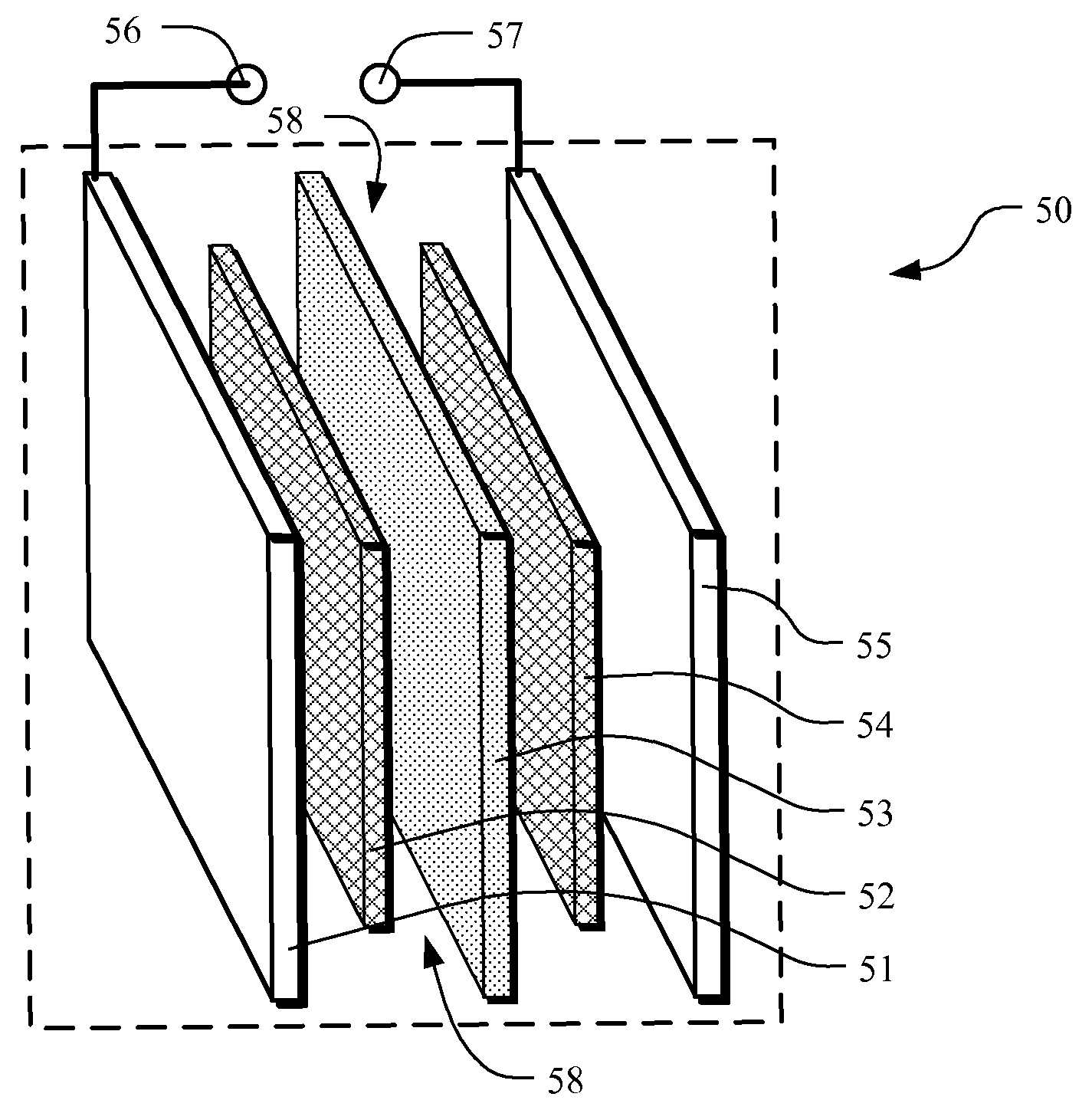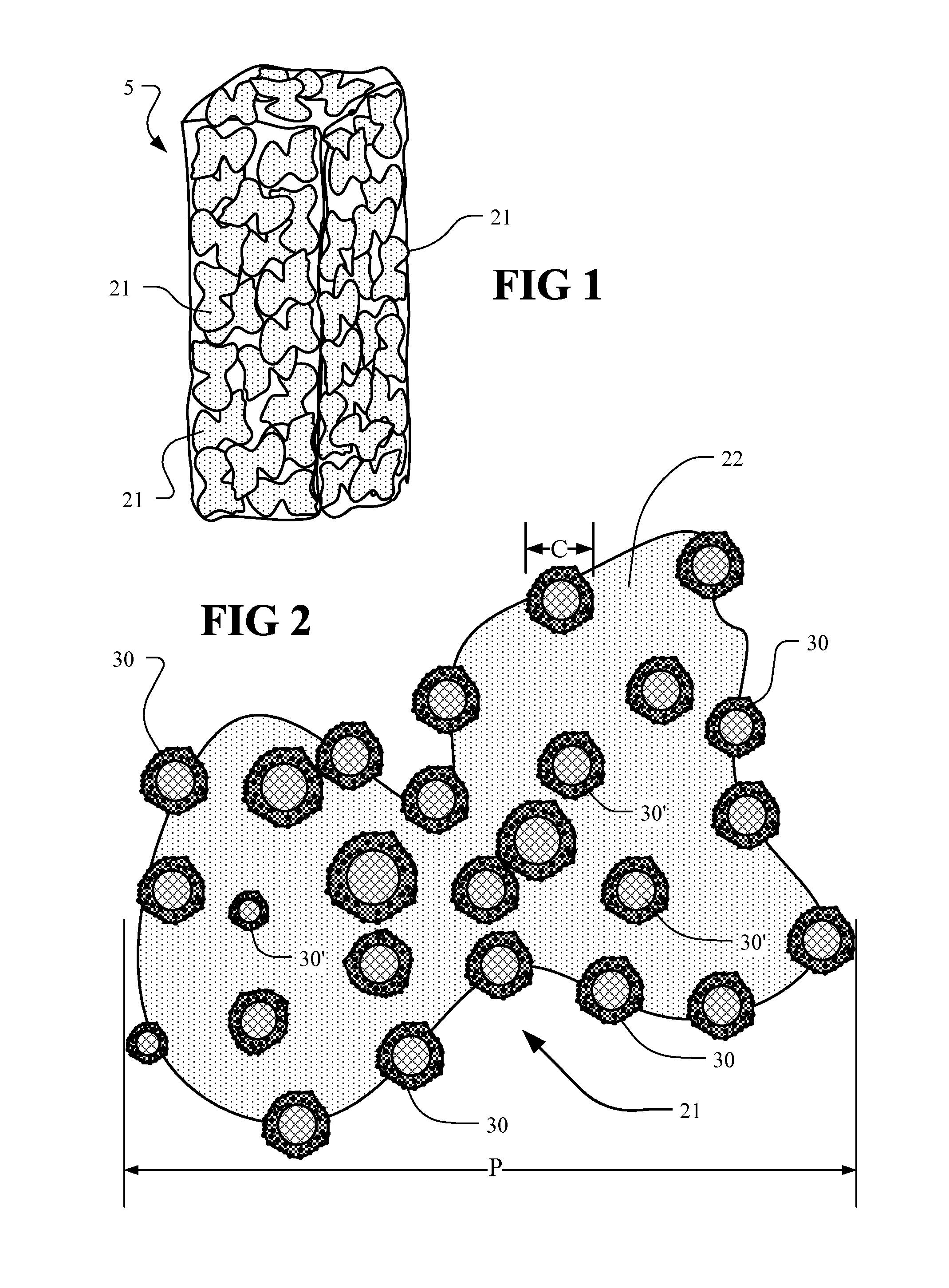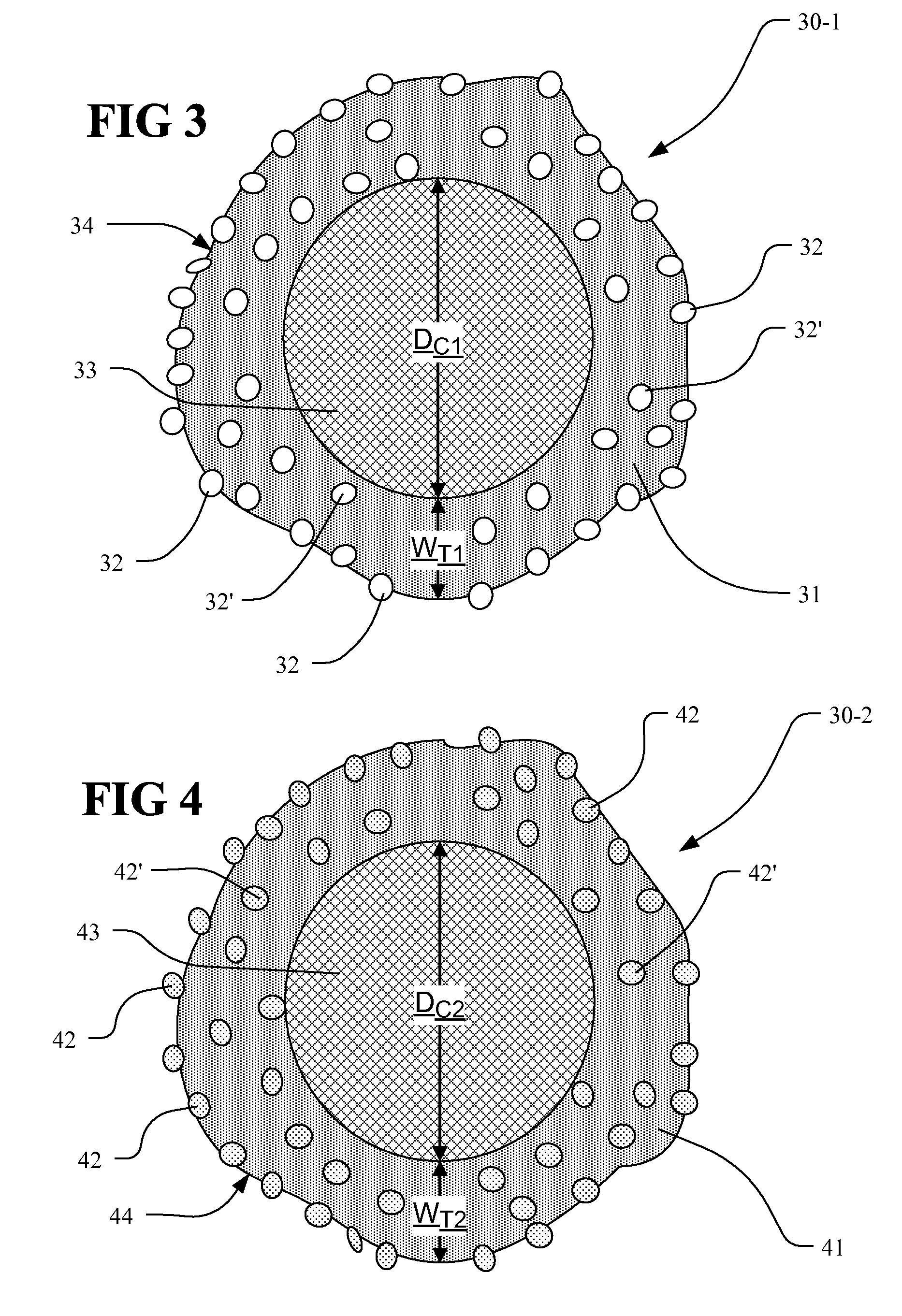Electrochemical capacitor
a capacitor and electrochemical technology, applied in the field of electrochemical capacitors, can solve the problems of high cost and unattractive commercial applications, high cost and labor intensity of rigorous processing steps for the manufacture of nanomaterials, and the yield of activated carbons is generally not better than 25%, so as to achieve high power and energy density, high power density, and fast charge
- Summary
- Abstract
- Description
- Claims
- Application Information
AI Technical Summary
Benefits of technology
Problems solved by technology
Method used
Image
Examples
Embodiment Construction
[0044]The electrode materials used in electrochemical capacitors serve multiple concurrent functions by acting both as a battery and an electrochemical capacitor with tunable power and energy capabilities. The cost of the carbon-based electrode materials is substantially reduced through use of materials derived from tire pyrolysis. These nanosized carbon-based materials are preferred materials for the electrodes in electrochemical capacitors due to their large surface areas and high charge densities. The large surface areas and high charge densities are accessible to the charge carrying electrolyte ions. Highly accessible surface areas and high charge densities are important for high energy density and high power density.
[0045]The char obtained from the pyrolysis of tires is an inexpensive source of nanomaterials that, with further control and added processing, are potentially useful in many fields including Photo Catalysts, Contact Catalysts, Capacitors, Batteries, Sorbents (Adsorb...
PUM
| Property | Measurement | Unit |
|---|---|---|
| diameter | aaaaa | aaaaa |
| thickness | aaaaa | aaaaa |
| diameter | aaaaa | aaaaa |
Abstract
Description
Claims
Application Information
 Login to View More
Login to View More - R&D
- Intellectual Property
- Life Sciences
- Materials
- Tech Scout
- Unparalleled Data Quality
- Higher Quality Content
- 60% Fewer Hallucinations
Browse by: Latest US Patents, China's latest patents, Technical Efficacy Thesaurus, Application Domain, Technology Topic, Popular Technical Reports.
© 2025 PatSnap. All rights reserved.Legal|Privacy policy|Modern Slavery Act Transparency Statement|Sitemap|About US| Contact US: help@patsnap.com



